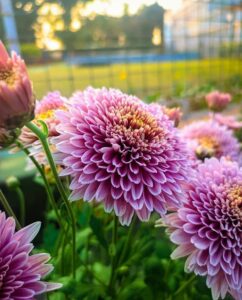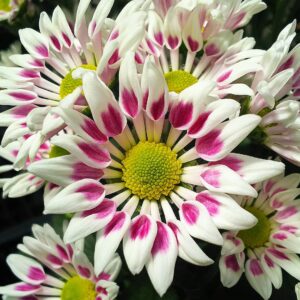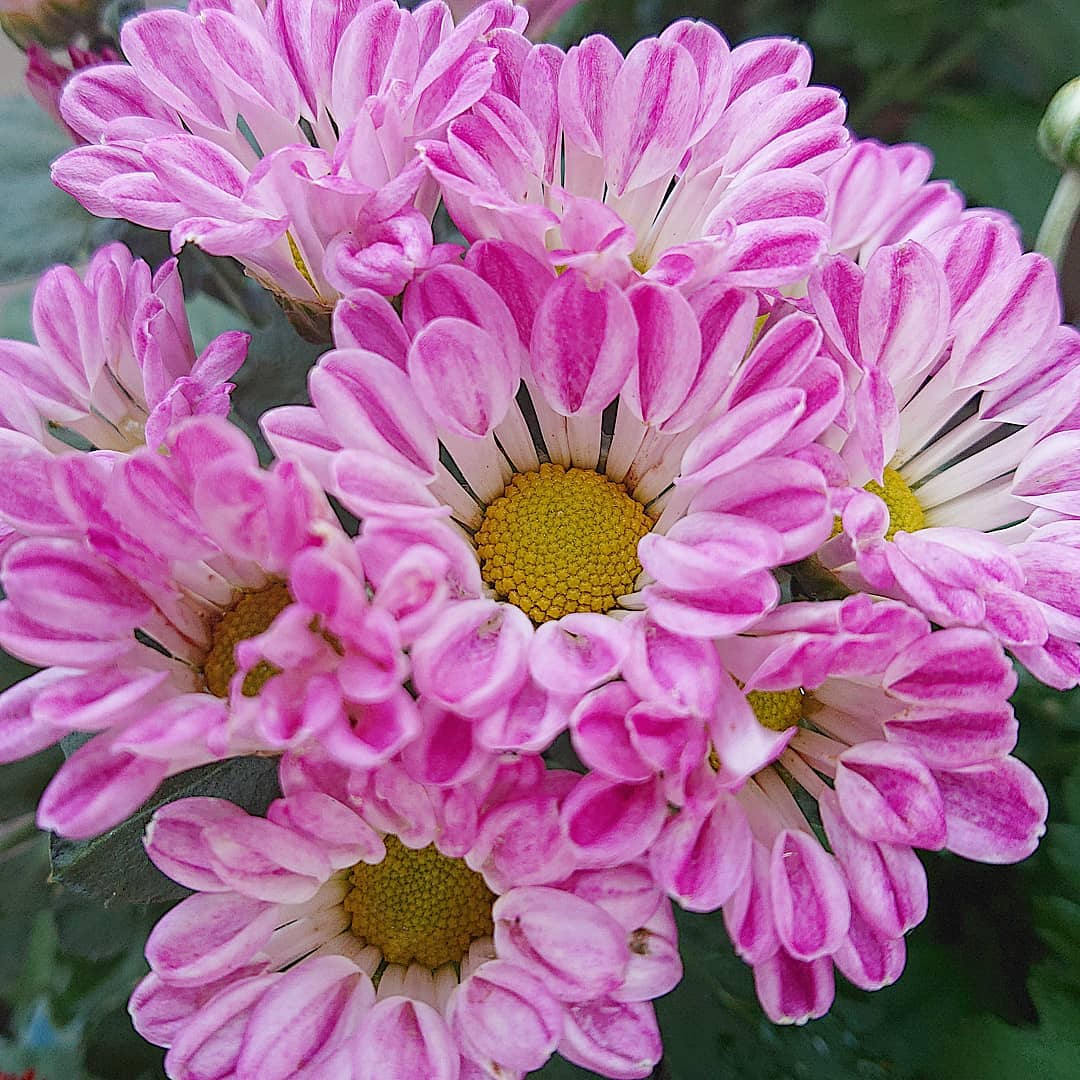Read this Chrysanthemum Morifolium Care and Growing Guide and include the vibrant blooms in your home garden for a refreshing pop of color.
Learn how to care for and grow Chrysanthemum Morifolium with this comprehensive guide. Discover essential tips and techniques to ensure beautiful blooms and healthy plants.
Check out Chrysanthemum Flower Tattoo Meaning and Importance
Chrysanthemum Morifolium Profile

Commonly known as mums or Garden Chrysanthemums, it belongs to the Asteraceae family. This family includes various flowering plants, commonly known as daisies or sunflowers. Chrysanthemums are popular ornamental plants and are widely cultivated for their attractive blooms.
This perennial plant has a bushy and compact form, with a height ranging from 1-3 feet, depending on the variety. The flowers come in a wide array of colors, including shades of white, yellow, pink, red, and purple. The blooms have a unique and intricate structure, with a central disc surrounded by ray-like petals, giving them a daisy-like appearance. Mums typically bloom from late summer to fall, making them a popular choice for adding color to gardens during the cooler months.
The leaves of Chrysanthemum morifolium are dark green and have a lobed or toothed shape, depending on the variety.
Check Texas Star Hibiscus Growing Information
How to Propagate Chrysanthemum morifolium

Chrysanthemum morifolium can be propagated through division, seed, layering, micropropagation, tissue culture, or cutting. Though, the easiest way to grow mums is from cuttings.
Propagating Chrysanthemum morifolium from cuttings is a relatively straightforward and effective method. Here’s a step-by-step guide on how to do it:
Materials You’ll Need:
- Pruning shears or sharp scissors
- Rooting hormone (optional, but can increase success rate)
- Small pots or seed-starting trays
- Well-draining potting mix or seed-starting mix
- Clear plastic bag or a propagator (to create a mini-greenhouse effect)
Step-by-Step Guide:
- Selecting the Cutting: Choose a healthy, non-flowering stem from the Chrysanthemum plant. The stem should be about 3-5 inches (7-12 cm) long and free from disease or damage. Look for a stem with at least 2-3 sets of leaves.
- Preparing the Cutting: Using sharp pruning shears or scissors, make a clean cut just below a leaf node. A leaf node is the point where a leaf attaches to the stem. If possible, take the cutting early in the day when the plant is well-hydrated.
- Removing Leaves: Carefully remove the lower leaves from the stem, leaving only a few leaves at the top.
- Planting the Cutting: Fill small pots or seed-starting trays with a well-draining potting mix or seed-starting mix. Make a small hole in the soil using a pencil or your finger and gently insert the cutting into it, burying it about an inch (2.5 cm) deep.
- Moistening the Soil: Water the soil thoroughly to ensure the cutting is well-settled and to initiate root growth. Avoid overwatering, as soggy soil can lead to rot.
- Creating a Mini-Greenhouse: To maintain high humidity around the cutting, cover the pots or trays with a clear plastic bag or use a propagator.
- Place in a Bright Location: Chrysanthemum cuttings need bright, indirect light to root successfully. Avoid direct sunlight, which can be too intense for the delicate new cuttings.
- Monitoring and Care: Check the cuttings regularly to ensure the soil remains moist but not waterlogged.
- Transplanting: After a few weeks (typically 2-4 weeks), the cuttings will develop enough roots to transplant into individual pots or directly into the garden. At this stage, you can treat the new plants as mature Chrysanthemums and continue caring for them accordingly.
Check Skeleton Flower Growing and Care Guide
Ideal Pot Size for Growing Chrysanthemum Morifolium
Use pots with a diameter of 8-12 inches for individual plants or 12-18 inches for larger varieties or multiple plants. Make sure the pot has drainage holes.
Growing Condition for Chrysanthemum Morifolium

Sunlight
These plants like to be in the sunlight, but they also do well with some shade. If the summers are really hot, they might need some afternoon shade. It’s best for them to get at least 5-6 hours of direct sunlight each day.
In very hot weather, you can protect them by using shade cloth or something temporary to block the direct sunlight during the hottest hours.
Soil
Chrysanthemum morifolium likes soil that drains well. They can grow in different types of soil, like loamy, sandy, or clay, as long as the water can move through it easily. The soil’s pH, which shows how acidic or neutral it is, should be around 6.5 to 7.0, which is slightly acidic to neutral.
Water
Water your chrysanthemums regularly so the soil stays evenly moist but not soaked. Too much water can cause root rot, which is harmful to the plants. It’s better to water them deeply but less often rather than giving them small amounts of water frequently. This way, the roots will grow deeper and be healthier.
Temperature
Chrysanthemum morifolium grows best when the temperature is between 59°F to 75°F. They can handle cooler weather, even light frosts and chilly nights, but very cold temperatures or freezing conditions can harm the plants.
However, they don’t like it when it gets too hot, especially above 86°F. If the temperature gets too high, the plants may wilt, which could also impact how many flowers they produce. So, keeping them in a moderate and comfortable temperature range is best for their health and growth.
Check Esperanza Plant Growing and Care Guide
Chrysanthemum Morifolium Care

Fertilizer
During the growing season, regularly feed Chrysanthemum morifolium using a balanced, slow-release fertilizer following the package directions. Typically, apply the fertilizer every 2-4 weeks from spring until mid-summer.
Ensure the fertilizer has a rational NPK ratio to avoid excessive nitrogen, which can lead to lush, leafy growth at the expense of blooms.
Pruning
Pruning or pinching back is an essential practice to encourage Chrysanthemum Morifolium to grow bushier and produce more beautiful blooms. When the plants reach about 6 inches in height, it’s best to do this in late spring or early summer. Simply pinch off the tips of each stem, and this will encourage the plant to branch out and become fuller.
If necessary, you can repeat this process once or twice during the growing season. After the blooming season is over, it’s time for another round of trimming. Cut back Chrysanthemum Morifolium to a height of about 4-6 inches. By doing this, you’re helping the plant prepare for the next growing season, ensuring it stays healthy and vibrant.
Pests and Diseases
Chrysanthemum morifolium can face problems with pests. Some of the common pests that can harm these flowers are aphids, spider mites, and leaf miners.
To deal with aphids and spider mites, you can use insecticidal soaps or bring in helpful insects like ladybugs to your garden.
However, leaf miners can be a bit trickier to handle. You might need to remove the leaves that are affected and get rid of them properly. If that doesn’t work, you can try using a specific kind of pesticide to control them.
Chrysanthemum morifolium is vulnerable to pests like aphids, spider mites, and leaf miners. You can control them using insecticidal soaps, introducing beneficial insects like ladybugs, or removing affected leaves. The flowers can also prey on diseases such as powdery mildew, botrytis blight, and rot.
You can prevent these diseases by ensuring good air circulation, watering at the base, and avoiding late-day watering. If the diseases become a significant problem, you can use fungicides.
Check Teddy Bear Sunflower Growing and Care Information
FAQs
Q.1.How do I encourage more blooms in my Chrysanthemum Morifolium?
To encourage more blooms, pinch off the tips of each stem when the plants are about 6 inches tall in late spring or early summer. This will help the plant branch out and become fuller.
Q. 2. What should I do if my Chrysanthemum Morifolium leaves turn yellow?
Yellowing leaves can indicate overwatering or poor drainage. Make sure the soil is well-draining and adjust your watering schedule accordingly. Avoid waterlogged conditions, as this can lead to root rot.
Q.3. Can Chrysanthemum Morifolium be grown as perennials, or are they annuals?
Chrysanthemums are typically grown as perennials in moderate climates. In colder regions, they may not survive the winter and are grown as annuals or brought indoors during the cold months.
Q.4. Should I deadhead the faded flowers from my Chrysanthemum Morifolium?
Yes, deadheading, which means removing faded flowers, can encourage the plant to produce more blooms. Simply pinch off the old flowers to promote continuous flowering.


